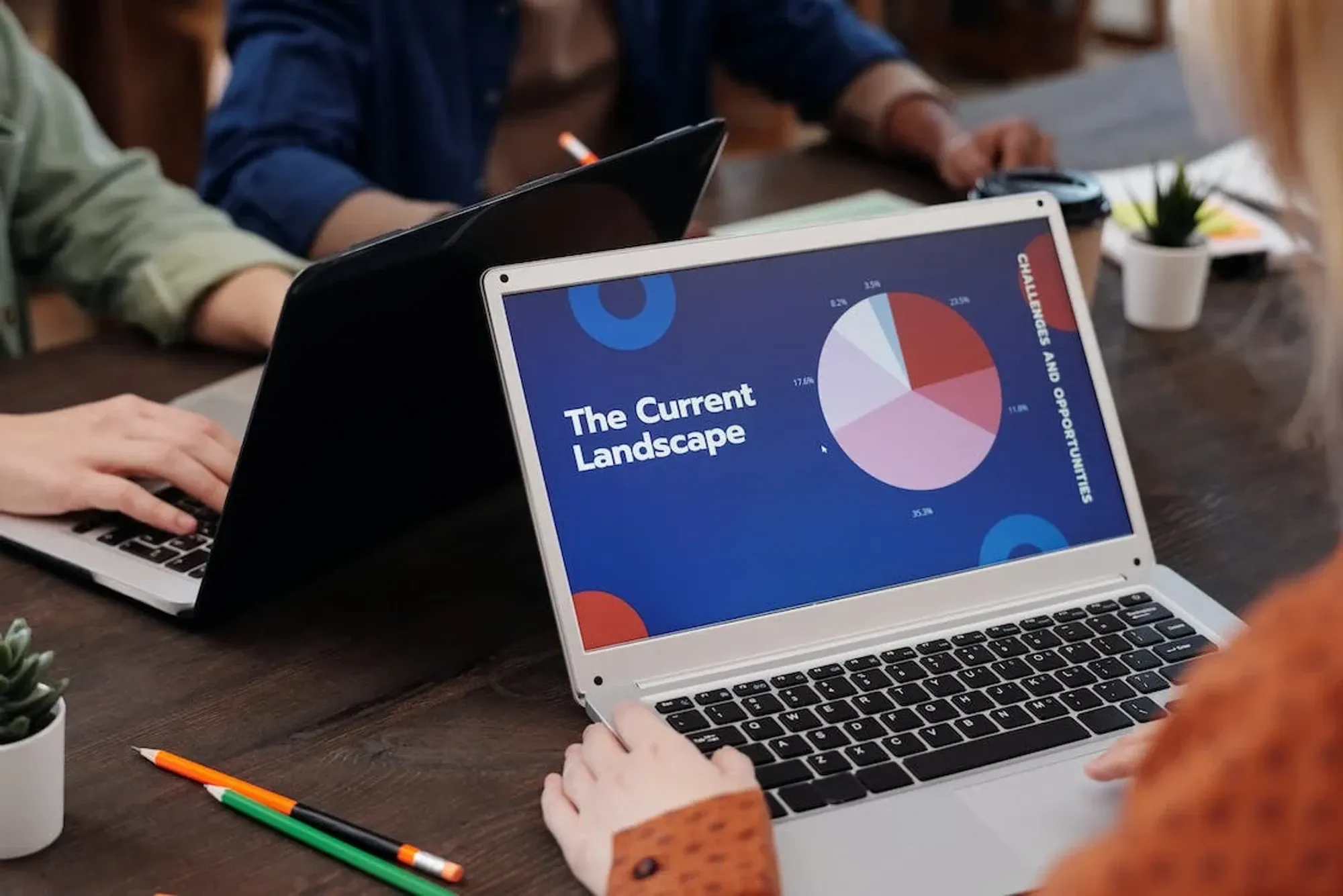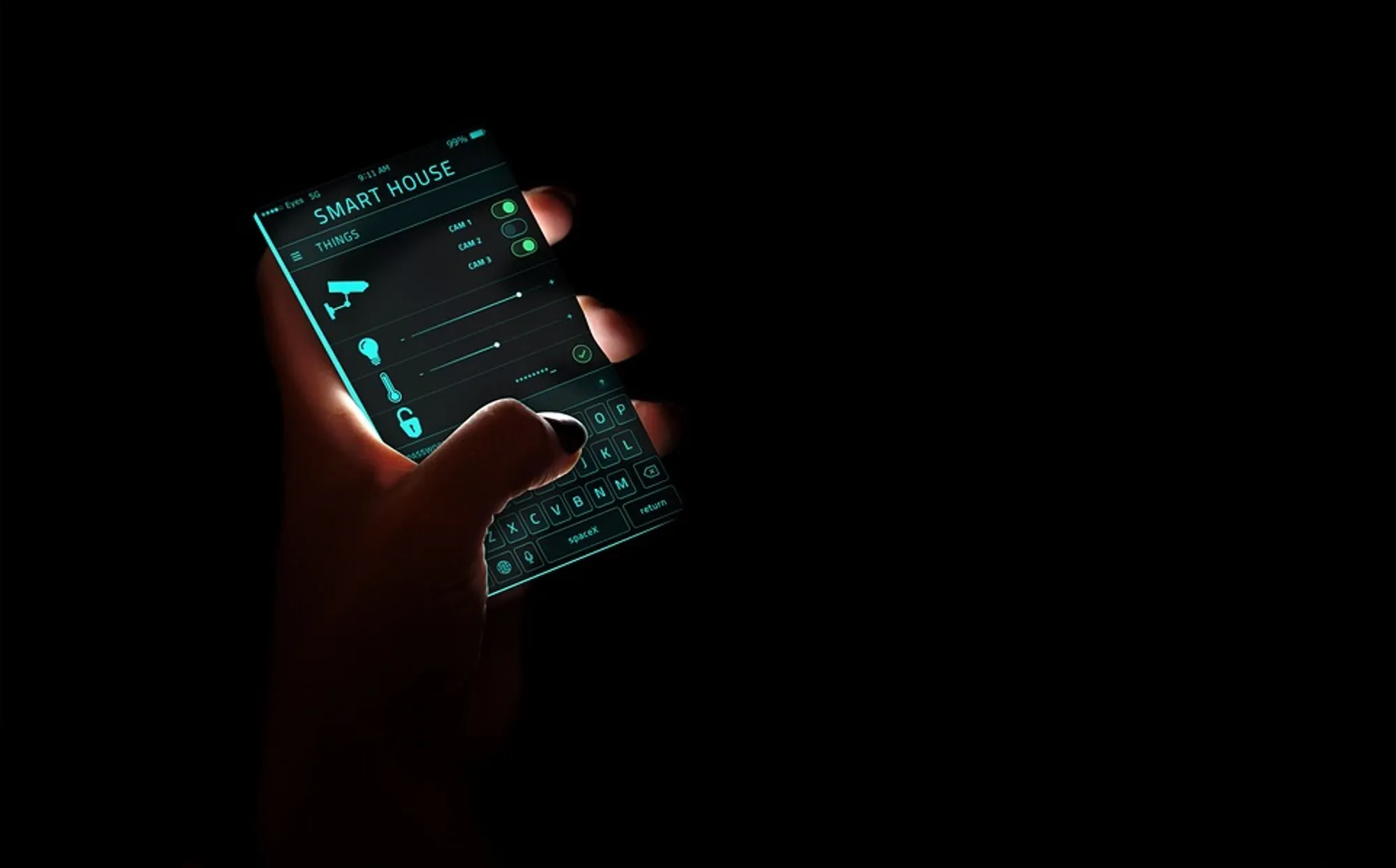
7 Technology Trends That Will Reshape UX Design In 2024
Dieser Inhalt wurde noch nicht ins Deutsch übersetzt. Wir zeigen Ihnen unten die englische Version.
It goes without saying that the field of UX design is continually evolving, with new trends, technologies, and so-called best practices emerging seemingly with each new week. Nowadays, technologies such as AI, machine learning, IoT, VR and AR are impacting almost every industry in the world — and UX design is certainly no exception.
So, with all these new tech innovations emerging and evolving at such a rate, how can UX designers keep up? In this post, we’ll assess how 7 key technology trends will impact the UX industry in 2024 and beyond. Let’s begin.
7 Technology Trends That Will Revolutionize UX Design
1. Data visualization

Image from Pexels
Studies have shown that almost two-thirds of us are visual learners: for the majority of us, we’re far more likely to absorb information if it’s presented visually than in written or verbal form. UX designers understand this, and it’s why data visualization — simply the practice of taking a set (or sets) of data and displaying them in a visual format — is becoming an increasingly important way of conveying information. As users with (apparently) shrinking attention spans, we have neither the time nor the inclination to draw our own conclusions from data: instead, we want to see it.
If you’re a Spotify user, for example, you’re likely familiar with the music streaming platform’s popular Wrapped feature, which presents a year’s worth of data about your listening habits as a sort of personalized video ‘story’: how many hours you’ve spent listening, you’re most listened-to genres, artists and songs, your morning, daytime and evening listening preferences — all of these data points are communicated in a visually engaging way that makes us forget we’re looking at data at all. And who’s to judge if you like to unwind by listening to a little metalcore before bed?
2. Virtual and augmented reality

Image from Pixabay
Virtual and augmented realities may seem more suited to the world of online gaming (through immersive “worlds” like Fortnite and Second Life), but they’re equally important to UX design across a number of industries: Microsoft, for instance, recently introduced an advanced VR-based feature of its Teams platform called Mesh, which enhances collaboration for businesses by enabling individuals to meet in a ‘physical’ space despite being in another location altogether.
Moreover, with the augmented reality market expected to exceed $50 billion by 2024, AR technology will inevitably have a greater influence over UX in the coming years — enhancing shopping experiences, enabling easier navigation, and even aiding medical procedures. Many brands are already leveraging AR to create first-class user experiences – for example:
- Walmart: With its AR-assisted View In Your Space feature, online consumers using Walmart’s mobile app can ‘place’ furniture and decor items in their own homes to see how they’d look before buying them
- Sephora: The French retailer’s Virtual Artist feature allows you to ‘try on’ makeup instantly. The app scans your face, detects your eyes, lips, and cheeks, and even provides step-by-step tutorials tailored to the shape and tone of your face.
- Nike: The sportswear giant’s Fit app scans customers’ feet using a smartphone camera and then employs a specialized 13-point measuring system to offer ‘hyper-accurate’ shoe sizing.
3. Natural language processing (NLP)
A subset of artificial intelligence (AI), natural language processing (NLP) is what enables a machine to interpret, analyze, and ‘understand’ human language. Elements of NLP include speech recognition, grammatical ‘tagging’, word sense disambiguation, and sentiment analysis, and it will continue to be vitally important to UX, especially as the number of smart assistants — such as the highly-versatile Google Assistant — in use is already in the billions: by 2024, the number is expected to reach over 8 billion.
AI-powered chatbots — like the very unsubtly-named ChatBot — are becoming an important part of a user experience, and more and more businesses are using them to provide 24/7 customer support, generate leads, and automate actions such as booking meetings. Advanced chatbots use NLP to ‘mimic’ a human-to-human interaction, and they can even leverage machine learning capabilities to improve their effectiveness when interacting with a user. It’s becoming increasingly difficult to discern whether you’re interacting with a human or an AI-powered bot, and over the next decade it may become virtually impossible.
4. Sustainable UX
You’re likely familiar with the term Green UX, but it’s becoming increasingly crucial as awareness of the importance of sustainability increases: nowadays, 80% of consumers consider sustainability to be important when purchasing a product from a brand. Sustainable UX is about creating a great user experience while also minimizing the environmental impact of that experience, and this can be achieved a number of ways:
- Minimizing user interactions: The longer a user spends interacting with a website or app, the more energy is consumed. And while user engagement is often the primary goal, a seamless customer journey, a simplified page layout, and a clear and intuitive menu will enable a user to navigate to a solution using fewer clicks.
- Designing for mobile first: Smartphones are now our predominant means of accessing the internet, but encouraging more mobile usage can also have green benefits. Mobile user experiences tend to consume less energy since the interface is typically simplified and only includes essential functions.
- Improving computational efficiency: The speed and performance of a website or app is fundamental to its UX, but it’s also tied to sustainability. Particularly if you’re an agency running multiple client websites, a slow-loading server is likely to produce a significant carbon footprint, so it’s worth switching to a scalable platform-as-a-service hosting solution (Cloudways’ hosting for agencies, for instance).
5. The Internet of Things (IoT)

Image from Pixabay
Increasingly, it’s not just computers but a number of physical devices (or ‘things’) that can connect to the internet — and also to each other. We’re referring here to physical objects (such as ‘smart’ home appliances) that are equipped with sensors, software, and processing capabilities that enable them to connect and share data with other devices across the web in real-time. Often overlapping with AI, cloud computing, and natural language processing, the IoT is what enables you to control your home’s central heating from your smartphone or tell Alexa to switch off the lights in your bedroom.
UX designers should pay particular attention to this increasingly prevalent phenomenon. When designing with IoT in mind, the UX involves a sequence of interactions between users, their virtual systems, and their physical devices — forcing UX designers to consider both digital and physical experiences. IoT, therefore, presents a new challenge for a UX designer by increasing the theoretical complexity of an everyday user interaction, particularly considering that many IoT products are distributed systems made up of several devices.
6. Inclusive design
Just as we’ve seen a shift to more sustainable UX practices, the demand for inclusive design continues to intensify into 2024 and beyond. Inclusive UX design works on the premise that by considering all different types of users and how they might interact with your content, you create a more universally-satisfying user experience. This also extends to accessible UX design, which caters to users with a physical disability: for example, more than 2 billion people across the globe have some kind of visual impairment, which can make it challenging for them to interact with digital products.
It’s important to consider the ‘curb-cut’ effect here, too: this principle states that by creating a solution designed to benefit people with disabilities (like the ramps cut into curbs to make it easier for disabled people to cross the street), you often end up benefiting a much larger user group. Just as lowered curbs assist people with pushchairs or those riding bikes just as much as they do someone with impaired mobility, accessible UX solutions are likely to have a wider benefit — since they theoretically make it easier for anyone to interact with a website or app, regardless of whether they have a disability or not.
7. AI-powered design
AI capabilities are advancing at such a rate that the technology is having an impact on almost every industry in the world: in the healthcare sector, for example, AI is assisting in diagnosing medical conditions more accurately, while the automotive industry is soon to be shaken up by the widespread introduction of autonomous vehicles — current predictions state that up to 33 million driverless cars will be on the road by 2040. The digital sector is no less susceptible to the influence of AI, of course, with the tech now able to generate content, create images, and even design digital experiences.
UX designers may recoil at the fact AI can be used for the latter, but there’s no danger of machines making a UX designer’s role redundant just yet. Instead, AI-assisted tools may actually be a good thing for UX design teams: by leveraging AI to build intuitive layouts and streamlined designs at the click of a button, UX designers can focus on the ‘bigger picture’ — performing user research, mapping the end-to-end user journey, defining interaction models, developing engaging content, and carrying out testing and iteration. AI can empower UX teams to add value where it really counts.
If you’re a UX designer, you’ll likely already be aware of these rapidly-evolving tech trends, and if you’re not you’d be unwise to overlook them. In 2024 and beyond, these trends will continue to become important facets of any UX designer’s day-to-day existence.



